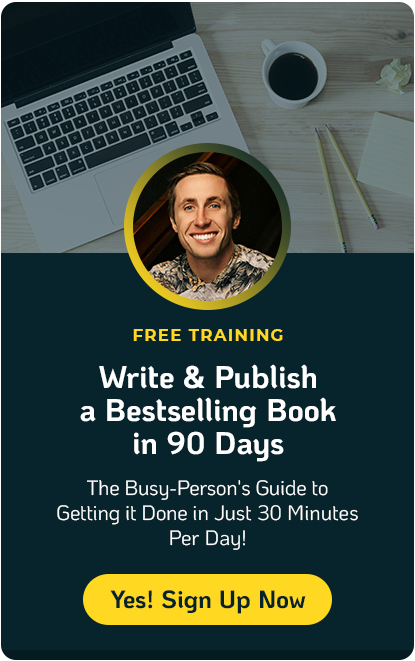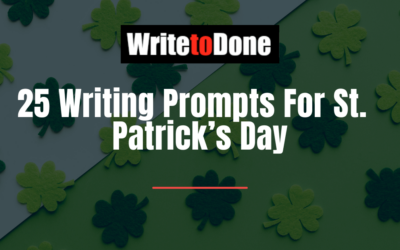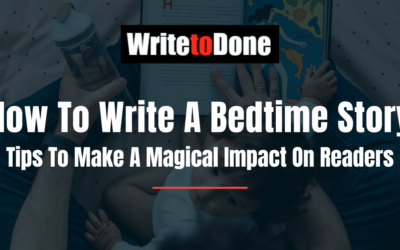You think of yourself as a blogger…or copywriter…or fiction author…or some other specific kind of writer.
I must be psychic, right? 🙂
But even though you may be a talented writer, you’re probably wondering why you’re struggling to pay the bills.
Your prose leaps from the page, you offer amazing value, and you may even have some cool bribe to convince website visitors to join your mailing list.
And yet…you’re doing what you love and the money isn’t following.
What gives?
I’ll tell you what gives. Remember how I used my brilliant powers of deduction to guess that you think of yourself as a certain type of writer?
That’s the problem right there.
The simple shift we promise in the headline–the shift that will help you earn more as a writer, not to mention gain new readers–is a shift in mindset:
Instead of thinking of yourself as an author, or blogger, or copywriter, try thinking of yourself as a reporter.
Using journalism techniques is a fantastic way to add value, interest, and plain old oomph to any kind of writing.
Not only that, but adding journo-style elements to your writing can help you attract and land more lucrative assignments from clients like:
- print magazines
- online magazines
- copywriting clients
- well-paying blogs
- ghostwriting clients
A good copywriting client might pay $50 per hour for a ghostwritten article, a case study, or an advertorial, and many pro writers command more than $100 per hour. A newsstand magazine might offer 50 cents to $1 per word and up. (I’ve earned $2.50 per word for rush assignments from one of the bigger ones.)
Do those numbers put stars in your eyes?
Yeah, me too.
So if you’re doing fiction, blogging, writing for online outlets, or any other style of writing, and struggling to make it work financially–shifting to journalist-think can help improve the writing you love to do–AND attract gigs from these better-paying markets. Best of both worlds, people.
Ready to pull yourself from the morass of low-pay writing and land some of these high-paying clients instead–not to mention boost your skill in your chosen genre? Try using these five journo tricks:
#1. Draw them in with story.
Many writers feel their job is merely to convey information, so that’s what most of us do: we put numbered lists and ultimate guides on our blogs, or enumerate the benefits of our copywriting clients’ products in a brochure–and then sit back and wait for the accolades to roll in. Oops.
The fact is, no matter what kind of writing you do, your job is to connect with readers by telling stories.
Sure, those stories will convey information, but they will also help readers understand your info emotionally as well as logically.
Pick up any women’s health magazine and you’ll see articles that lead off with an anecdote about a woman who survived a dreaded disease. Scan through a business publication and you’ll notice stories of entrepreneurs who increased their profits through the downturn, or hired homeless people, or succeeded despite going up against big-box stores. Parenting articles are rife with anecdotes from real moms.
You can use the same technique in your web pages, blogs, and books. Instead of listing your client’s amazing qualities in a brochure, tell a story about how their product improved someone’s life. Rather than writing “just the facts, ma’am” in your book or blog post about time management tactics, weave a story about a hopeless case who turned his life around by learning to manage his time.
Using storytelling techniques like journalists do will not just teach your readers, but make them care about what they’re learning.
#2. Wrap it all up in a nice package.
Packaging is how an article is laid out, formatted, and presented in a magazine–and you can use some of the most interesting types of packaging to bring a professional panache to other types of writing as well.
For example, instead of straight text, you can try writing quizzes, Q&As, and “charticles”– articles in chart form. Break up your case study with clever, alliterative subheads. Write your entire short story in the form of tweets. Or come up with interesting graphics or layout for a blog post–like, if you’re writing a post about saving energy in the home, turn it into an infographic of a house with call-outs pointing to the different elements you’re writing about.
#3. Bring in outsiders.
When you write blog posts, books, short stories, or even novels, often it’s all about you. YOUR opinion. YOUR feelings. What YOU already happen to know about a topic.
But enticing writing includes different voices.
The subject expert who can inform your novel. The person-on-the-street you quote in a blog post. The copywriting client’s customers or CEO or vendors.
Add this journo technique to your writing by interviewing other people instead of just relying on your own knowledge. Who do your readers look up to? Who knows the most about 17th century Scotland for your short story? Who has a compelling anecdote about the subject of your nonfiction e-book?
Just like a journalist, you can tap book authors, think tanks, universities, medical professionals, business owners, association spokespeople, and others to bring your readers the very best information and a refreshing viewpoint.
Also, don’t be afraid to reach out to these people. Many experts are happy to spend a few minutes talking with you if it helps spread their message.
#4. Pretty it up.
Up the professionalism of your writing by making it look as attractive as print magazine articles. This is especially doable for self-published books, e-books, and blog posts, but you can even endeavor to gussy up the advertising copy you turn in to your copywriting clients, for example. Photos, graphics, stylish colors, and clear formatting are key for all kinds of writing you create for public consumption.
Some successful writers even learn how to style and shoot their own photos. For example, many food bloggers and self-published cookbook authors take classes on food styling and photography, and then go to town with creative backdrops, interesting china and props they collect at thrift shops, and fun presentation — all of which make their writing look as professional as the articles you’ll see in any foodie mag.
#5. Give ’em the scoop.
Ever notice how something important happens, and the writing world explodes with blog posts, books, and e-books about every aspect of the event?
Well, you can do better than jump on the overcrowded bandwagon with every other writer…you can bring your readers news and information before anyone else, just like magazines and newspapers endeavor to do.
Of course, you can’t predict news events like hurricanes and protests. But you CAN make an effort to know what’s new in your subject area before your readers have an inkling. Then readers will flock to you for the news they need, and potential clients looking for a writer in a particular topic area will see you as the expert.
For example, let’s say you write e-books about fitness. Instead of taking inspiration from magazine articles and news pieces that have already been published, go to where these reporters get their news in the first place. Subscribe to press release services like PRNewswire, buy industry journals like Club Industry and IDEA Fitness Journal (you need to be an IDEA member to subscribe), and troll repositories of medical studies such as Eurekalert and PubMed.gov.
When you bring your readers breaking news, you’re acting like a real journalist_a skill coveted by prospective writing clients.
All this sounds like hard work, and it is. But it’s this effort that will elevate you above the hordes of writers out there vying for readers and gigs. Taking the time to learn journalism skills is worth it in every way, for every genre of writing.
If you want to earn more from your writing, think of yourself as a reporter–not just another copywriter, blogger, author, short story scribe–and you’ll not only enthrall your readers, you’ll also attract big-pay writing clients.
About the author:
Linda Formichelli has written for more than 150 magazines, from Pizza Today to Redbook, and for copywriting clients like OnStar, Sprint, Pizzeria Uno, and Bay State Gas. She runs the Renegade Writer blog. Linda co-teaches the Article Writing Masterclass, a 10-week e-course that gives writers the skills and confidence to earn more by writing killer articles. The next class starts in January. Check it out here.
CLICK HERE to register.
Copyright: michaeljung / 123RF Stock Photo
















